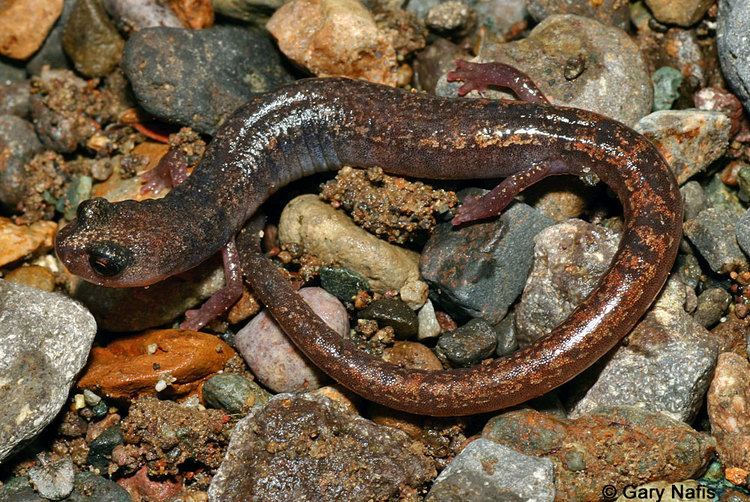
"Observations of Oregon slender salamanders ( Batrachoseps wrighti) in suburban landscapes". Adults are short-limbed and very worm-like it takes a while for the juveniles bodies and tails to outgrow the proportions of their heads and legs. 10 You can buy these supplements at pet stores or online. They should have a calcium supplement every time you feed them, and a multi-vitamin once or twice each week. You can help keep your salamander healthy and looking great by giving them supplements in their food. Tails may be twice as long as snout to vent length, especially in males. Sprinkle the food with supplements each week. ^ Guderyahn, Laura Curtis Musson Ashley Smithers Benyamin Wishnek & Charlotte Corkran (2010). California Slender Salamanders average from 3 to 5 1/2 inches in length (1 1/4' to under 2' snout to vent)."Wildlife associated with old growth forest in the PNW". The California slender salamander ( Batrachoseps attenuatus) is a lungless salamander that is found primarily in coastal mountain areas of Northern California, United States as well as in a limited part of the western foothills of the Sierra Nevada, California, in patches of the northern Central Valley of California, and in extreme southwestern. ^ Oregon Department of Fish and Wildlife (2006).US Forest Service, General Technical Report RM-GTR-166: 11–22. Management of Amphibians, Reptiles and Small Mammals in North America. "Douglas-fir forests in the Oregon and Washington Cascades: abundance of terrestrial herpetofauna related to stand age and moisture". AmphibiaWeb: Information on amphibian biology and conservation. Amphibian Species of the World: an Online Reference. ^ a b c d IUCN SSC Amphibian Specialist Group (2022).When found this species will coil its body up and remain motionless. Slender Salamanders: Bonaparte, 1841: Species: minor: Lesser Slender Salamander: Jockusch, Yanev & Wake, 2001: Original Description: Elizabeth L. Ĭlutch size is 3–11 and the eggs are 4 mm in diameter. They have a long thin body and grow to 61 mm (2.4 in) in snout–vent length and 120 mm (4.7 in) in total length, though most individuals are smaller. The species has also been found in a suburban landscape.

They prefer habitats that have a closed canopy. They are found in large diameter decayed logs. However they have been found in earlier succession forest with larger logs and much downed woody debris. They are typically found in old growth habitat, associated with late-successional Douglas fir forests. The species' natural habitats are temperate forests of moist Douglas fir, maple, and red cedar woodlands in Oregon, to 910 metres (3,000 ft). The state of Oregon has listed it as sensitive in the Oregon Conservation Strategy. It is federally listed as a Species of Concern. The Oregon slender salamander is threatened by habitat loss and classified as IUCN Red List Near threatened. The Oregon slender salamander is endemic to north-central Oregon, found particularly on the western slopes of the Cascade Range but also in some sites on the eastern slopes. Maughn on Flickr Sources: Wikipedia, Californiaherps.The Oregon slender salamander ( Batrachoseps wrighti) is a species of salamander in the family Plethodontidae from the Northwestern United States. Not too damp, though! Unlike other amphibians, they can’t go in the water for more than a few seconds.
#Slender salamander skin
Most remain in a very small area for most of their lives.įun fact: these salamanders don’t have lungs! They breathe through their skin instead, which is why they need to keep things damp. Some have only two legs while others have four, and some have gills while others do not.

Salamanders illustrate diversity with over 600 species, including Mud Puppies and Newts. In some ways, they look like they are part frog. You can see them most frequently just after it rains, especially in December when they are out looking for a place to lay their eggs. When you observe a Salamander, you see slender legs and smooth skin from head to tail. Once it starts raining, they are on the move again. They enjoy damp, dark places and typically travel the forest floor under cover of fallen leaves or through the tunnels of other animals.ĭuring the summer, these salamanders will retreat underground and wait out the dry season in the damp soil. This week’s creature may be one of the smallest we’ve featured so far–but important nonetheless! The California Slender Salamander (Batrachoseps attenuatus) is shy but not uncommon in Humboldt county.


 0 kommentar(er)
0 kommentar(er)
